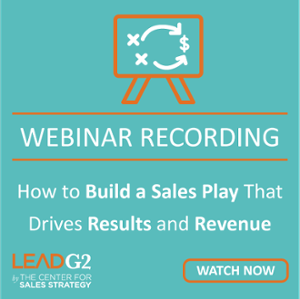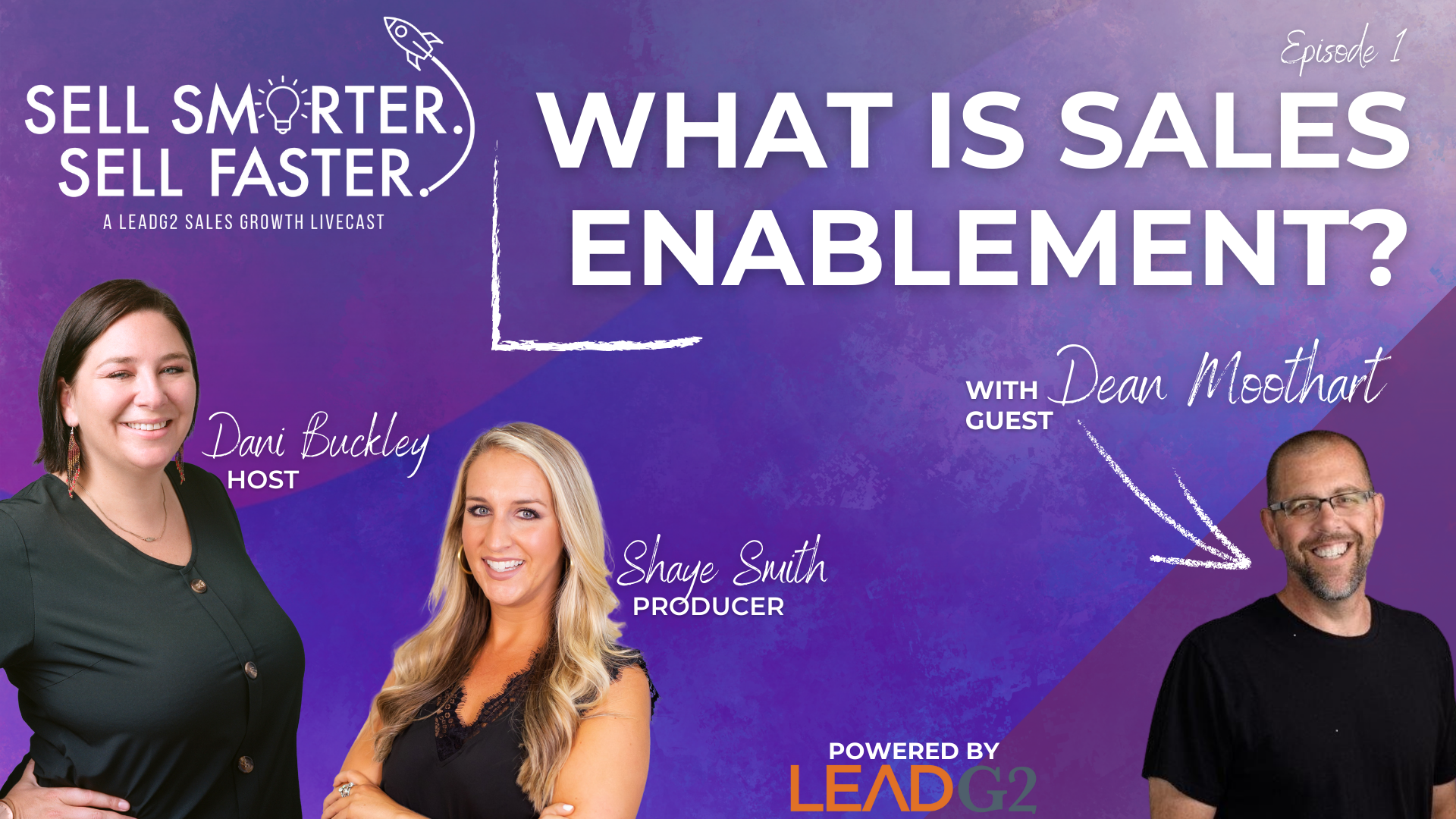The 4 Components of Effectively Employing Sales Enablement
Sales enablement is quite the buzzword these days, but for good reason. When done effectively, it can have lasting impacts on a sales organization....


Five years ago, if you asked a room full of sales leaders to raise their hand if they were implementing sales enablement initiatives at their companies no hands would have gone up. In fact, you would have got a lot of blank stares because no one had heard of the term “sales enablement”.
Today if you ask that same question to the same room of sales leaders, you’d get a smattering of raised hands, but still quite a few blank stares. Most have heard of sales enablement, but a lot of sales leaders are confused on what it is; what it looks like in the everyday life of a sales professional; and why it’s important.
 Sales enablement really isn’t that complicated. It’s any resource, tool, or process that helps improve the productivity and performance of a salesperson.
Sales enablement really isn’t that complicated. It’s any resource, tool, or process that helps improve the productivity and performance of a salesperson.
Sales enablement can come in many different forms. Some are simple and can be implemented in a few hours for very little cost; other forms are more complex and require a larger investment. Below are examples to help you evaluate where your organization's sales enablement gaps are.
It’s hard to engage with a prospect if you don’t know who they are or what they care about. Too many salespeople waste so much time “kissing frogs” – chasing unqualified prospects who simply aren’t good fits. You can help them narrow their focus by providing very clear parameters that define your ideal prospect.
Once you know who your target persona is, help your sales team zero in on them by providing as much data as possible. You may not be able to provide a list of specific contacts for them to call but try to narrow it down as much as possible. Can you identify the specific target companies or at least target vertical markets? The more you can narrow their focus and keep them from trying to “boil the ocean”, the more productive they will be.
Cold outbound calls and emails are becoming less and less effective. Inbound marketing is the practice of getting your prospects to come to you and self-identifying. We call it “getting your prospects to raise their hands”. Publishing and promoting thought leadership content to drive traffic to your website and building call-to-action offers that facilitate lead capture will help build a database of target prospects. This will make your sales team less reliant on cold calls.
The days of managing your sales contacts and future deals on spreadsheets and note cards is over. Technology makes it easier than ever to maintain a history of a prospect; manage upcoming sales tasks; segment data; and produce accurate sales forecasts. There are multiple CRM applications on the market today. They each offer various features and degrees of complexity. However, they no longer require large investments in time and money. Our team uses HubSpot’s CRM. It’s free and very easy to learn and use.
There are a few tools on the market that are designed to help provide insights into prospects and help salespeople work more efficiently. Our team uses HubSpot’s Sales Hub. It helps build, store and schedule email templates and email sequences, track when prospects open emails and view content, store sales collateral in an easy to access centralized repository, schedule meetings via automated links to my calendar, and log calls in CRM automatically. Quite simply, it helps accomplish more in less time.
Let’s face it—not every lead that we identify or generate is ready to close. Many aren’t even ready to engage with a salesperson. Does that mean they should be ignored? No, but it does mean the sales team shouldn’t dedicate a lot of time to them.
Most leads that marketing campaigns produce are top-of-the-funnel (TOFU) leads. They are not ready to buy—yet. They are just beginning their buying journey. They need to be educated and nurtured. Marketing automation technology like HubSpot can help you build automated workflows that digitally interact with your TOFU leads.
When nurturing workflows are properly executed, they will take your prospects by the digital hand and escort them to the next best steps in the process. A good nurture workflow will map content and offers to the various stages of buying funnel. After TOFU there’s MOFU (middle-of-the-funnel) and BOFU (bottom-of-the-funnel). Automating this activity keeps your sales team focused on the BOFU leads that are more ready to turn into closed deals.
There are common sales scenarios that your sales team faces over and over again throughout the year.
 These are all examples of situations your team repeatedly encounters. Further, your team is also hearing the same objections from prospects over and over. Sales plays are simply documenting the best way to maneuver these situations and overcome common objections. Instead of each salesperson “recreating the wheel” each time, sales plays prescribe best practice courses of action. They map out the next best action to take; recommend the timing of each action; and even offer email templates, voice mail scripts; call guides and recommended sales collateral. The objective of sales plays is to take the best practices that exist in pockets of your sales team and make them scalable and repeatable across your entire team.
These are all examples of situations your team repeatedly encounters. Further, your team is also hearing the same objections from prospects over and over. Sales plays are simply documenting the best way to maneuver these situations and overcome common objections. Instead of each salesperson “recreating the wheel” each time, sales plays prescribe best practice courses of action. They map out the next best action to take; recommend the timing of each action; and even offer email templates, voice mail scripts; call guides and recommended sales collateral. The objective of sales plays is to take the best practices that exist in pockets of your sales team and make them scalable and repeatable across your entire team.
Sales collateral are content assets that salespeople can use to communicate and reinforce their messaging. Examples include:
Providing the right piece of content at the right time can often jump-start a stalled sales process and accelerate a deal toward closing. Many salespeople waste countless hours either looking for the right piece of content or creating one from scratch to address a particular sales situation. High performing sales team create the collateral they need and store it in an organized and easy-to-access centralized repository.
Other sales content assets that sales teams waste a lot of time finding, creating or customizing are things like proposal templates and presentation decks. This can lead to two problems.
Sales playbooks are living documents that become the primary resource for salespeople. They not only include sales plays and sales collateral, but they also include company overview, elevator pitches, product overviews, competitor positioning statements, lead qualification criteria, sales KPIs, pipeline and forecast rules; and CRM guidelines. A good sales playbook becomes your team’s go-to reference and a great onboarding tool for new team members.
In short, your sales playbook becomes your team’s sales bible. 
There are still “old-school” sales managers and business owners who rely on lone wolf salespeople who muscle through each day with nothing more than a telephone and a computer. They cycle through salespeople hoping to find a rainmaker whose LinkedIn network provides a never-ending supply of new prospects and who can close deals on the strength of their dazzling personality and silver-tongued sales pitch. They view the ability of a salesperson to drive their own business as a rite of passage and a badge of honor. But these sales leaders are looking at their businesses through blurry and cracked twenty-year-old lenses. It’s this view that’s causing them to miss their sales quotas quarter after quarter and year after year.
It’s time to change your view. What can you do to come along side your sales team to help them sell better? What do they need to be more efficient? What do they need to improve performance? If you’re not sure, then ask them. Assemble your team and brainstorm a wish list. Shadow salespeople on your team for a day or a week and observe how they work. Are there some things you can provide to help them improve? Are there tools or resources or processes you can introduce that will enable the sales process?

Sales enablement is quite the buzzword these days, but for good reason. When done effectively, it can have lasting impacts on a sales organization....

Continual learning is essential if you want to grow and prosper in the business world. Last week, we launched our Sell Smarter. Sell Faster. weekly...

When you’re managing a busy sales team, the last thing you want is another time-consuming task. But what if you had the secret to increasing new...